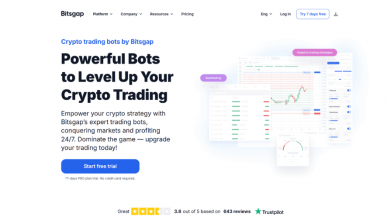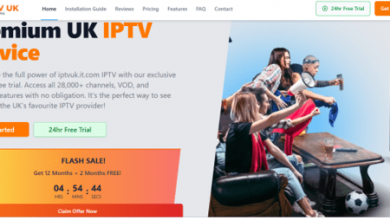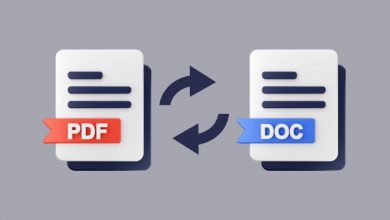Amit kumar 16-Year Rise to PharmaInnovation Leader

Walking through the corridors of Amneal Pharmaceuticals’ research facility in Piscataway, New Jersey, visitors might encounter a scientist hunched over complex formulation charts, methodically adjusting molecular structures with the precision of a master craftsman. This scene represents more than routine laboratory work; it embodies the patient persistence that has driven pharmaceutical innovation for decades.
Amitkumar Patel’s journey from assistant scientist to principal scientist reflects the broader transformation of generic drug development, where scientific rigor meets urgent patient needs and individual dedication reshapes entire therapeutic categories.
A Record of Regulatory Excellence
Over his 16 years at Amneal Pharmaceuticals, Patel has navigated the complex regulatory landscape and delivered more than 25 Abbreviated New Drug Applications to market. These approvals span critical health conditions, including urinary tract infections, epilepsy, osteoarthritis pain, various infections, local anesthesia applications, opioid-overdose emergencies, and allergic reactions. They demonstrate pharmaceutical impact across diverse therapeutic areas that affect millions of patients’ lives.
The pharmaceutical industry faces mounting pressure to accelerate drug development while maintaining safety standards. According to the Association for Accessible Medicines, generic medications account for 90% of prescriptions in the United States. Developing these generics demands sophisticated scientific expertise to replicate branded formulations while respecting existing patents, a challenge Patel has consistently met through technical mastery and strategic thinking.
International Foundation Shapes Scientific Approach
Patel began his scientific journey by earning a bachelor’s degree in pharmacy from K.B. Institute of Pharmaceutical Education & Research at Gujarat University in Ahmedabad, India, in April 2006. He gained comprehensive pharmaceutical knowledge and a global perspective on drug-development challenges.
His subsequent academic achievements demonstrate strategic professional development. He earned a master’s degree in chemistry with a pharmaceutical concentration from Fairleigh Dickinson University in 2008 and an MBA from Goldey-Beacom College in 2018. This international educational background, spanning Indian and American institutions, has given Patel unique insights into global drug-development challenges and regulatory requirements, a perspective that proves invaluable as the industry operates across internationalmarkets.
Navigating Complex Patent Landscapes
Patent pharmaceutical landscapes resemble intricate mazes that require careful navigation for successful market entry. Patel develops alternative generic formulations that offer patients affordable options while honoring intellectual property rights. His work on tacrolimus oral liquid formulations exemplifies this balance between innovation and accessibility.
Tacrolimus, an immunosuppressive agent crucial for organ-transplant recipients and patients with T-cell-mediated diseases, lacked ready-made liquid formulations. Patel’s patent application, titled Immunosuppressive Dosage Forms and Methods of Use, closes this gap by creating flexible dosing options that clinicians can easily titrate for individual patients. “Creating a flexible liquid dose was crucial for transplant patients who need precision without added complexity,” Patel said. Five other U.S. patents have cited his work, underscoring its influence on subsequent pharmaceutical research. Liquid formulations provide critical advantages for patients who struggle with solid dosage forms, particularly pediatric and geriatric populations, making this advancement especially meaningful.
Regulators worldwide acknowledge the value of such innovations. The European Medicines Agency has streamlined approval processes for generic medications that demonstrate bioequivalence to reference products while upholding rigorous safety standards. Patel currently directs projects at the European Union and United Kingdom markets, highlighting the expanding international scope of generic drug development.
From Laboratory Innovation to Market Impact
Effective pharmaceutical leaders translate complex molecular interactions into practical therapeutic solutions, and Patel exemplifies this skill. His portfolio spans an impressive range of dosage forms, including oral suspensions, nasal sprays, topical gels, and sterile ophthalmic emulsions. Each formulation reflects months or years of meticulous development, testing, and regulatory documentation.
Nitrofurantoin oral suspension for urinary tract infections showcases Patel’s problem-solving approach. The formulation required careful optimization of viscosity, pH, and dissolution properties while controlling light sensitivity. Through strategic excipient selection, precise excipient levels, and refined manufacturing processes, Patel created a stable product that Amneal introduced as the first generic of its kind. This outcome shows how technical innovation can generate a competitive advantage and improve patient access to essential medications.
Healthcare systems worldwide benefit from such efficiency. According to the Food and Drug Administration, generic medications save the U.S. healthcare system about $313 billion annually. Every successful generic launch increases competition and lowers prices for generic and branded alternatives. Patel’s contributions go far beyond individual products; they advance systematic efforts to improve healthcare accessibility across multiple therapeutic areas affecting millions of patients.
Advancing Critical Emergency Treatments
Patel currently leads three emergency nasal spray projects that address urgent healthcare needs. One formulation treats severe allergic reactions and anaphylactic shock, providing rapid intervention that can save lives. Another targets intermittent seizure activity, offering patients and caregivers a reliable emergency response. A third addresses acute repetitive seizure clusters, filling a crucial gap in neurological care.
He has also guided the development and regulatory submission for opioid-overdose emergency treatment. The opioid epidemic has claimed more than 500,000 U.S. lives since 1999, so rapid access to reversal medications remains a critical priority. By steering these products through approval, Patel directly supports public health and shows how scientific expertise can solve urgent societal challenges.
Academic Contributions Drive Industry Forward
The AAPS Journal published Patel’s co-authored chapter, “The Role of Excipients in the Microstructure of Topical Semisolid Drug Products.” This work, cited 30 times in scientific journals, explores how excipient selection influences the microstructure of creams, ointments, and gels, linking microstructure to critical quality attributes.
The chapter offers practical guidance on excipient selection, optimal levels, and manufacturing methods for semisolid topical products. By providing actionable insights, Patel’s academic contribution helps formulation scientists improve drug delivery, stability, and patient compliance in dermatological and other topical treatments.
Professional Service Extends Scientific Impact
Patel supports science education by judging several STEM fairs, including the Pennsylvania Junior Academy of Science, the Hudson County STEM Showcase, and the Delaware Valley Science Fairs. His evaluations focus on originality, research quality, data integrity, and practical application, ensuring fair assessments and encouraging budding scientists.
Through this outreach, he promotes scientific literacy and inspires future pharmaceutical innovators.
Manufacturing Innovation Drives Competitive Advantage
Patel’s inventive approach includes developing alternative suspension formulations. He achieved the desired small particle sizes by adopting multi-media milling instead of the microfluidizer technique, enabling Amneal to launch a first-to-market generic earlier than competitors.
His optimization of formulations and manufacturing processes consistently attains critical quality attributes while reducing timelines and costs. This efficiency generates significant revenue for Amneal and bolsters its competitive position, illustrating how scientific ingenuity can advance business objectives and enhance patient care.
Global Expansion and Future Directions
The pharmaceutical industry increasingly favors personalized medicine and complex drug-delivery systems. Patel’s emergency nasal-spray pipeline addresses severe allergic reactions and acute seizures, placing him at the forefront of these developments.
He coordinates submissions for the EU and UK markets, drawing on his cross-border regulatory expertise. Navigating diverse regulatory environments while maintaining scientific rigor remains one of his key strengths.
The Science of Sustainable Innovation
Pharmaceutical leaders must balance innovation incentives with broad healthcare accessibility. Patel’s record shows he can successfully achieve that balance. By collaborating across analytical, regulatory, and operations teams, he consistently moves projects from concept to market.
His career invites the industry to consider how focused scientific expertise can simultaneously achieve commercial goals and serve public health. Patel’s experience suggests that meaningful pharmaceutical innovation grows through the steady accumulation of knowledge applied with precision and purpose.





